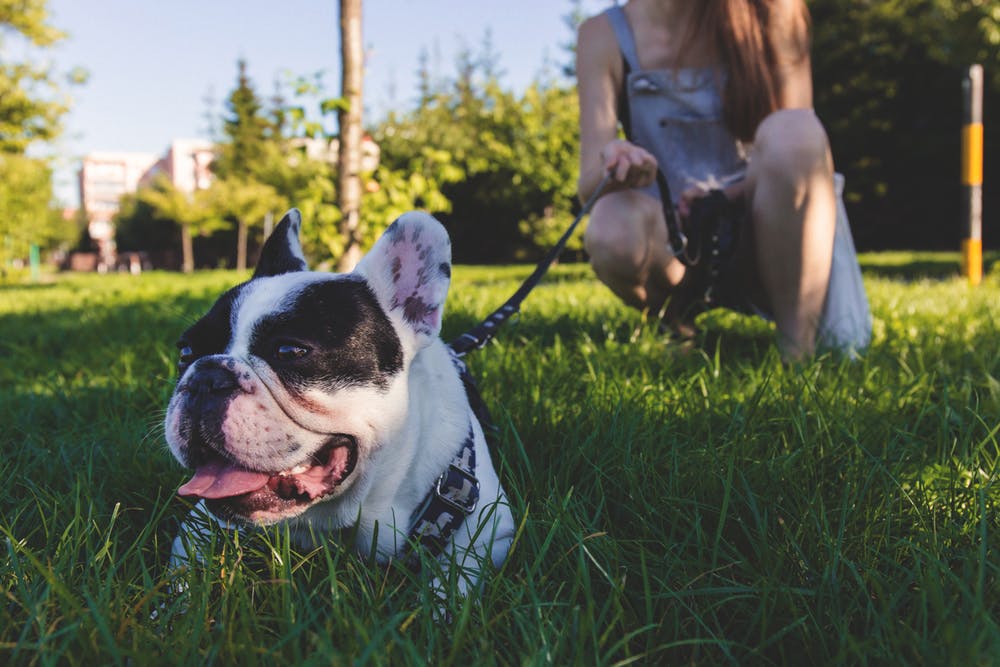With the urbanization and suburbanization of American society, our nation’s dogs have been delegated to backyards, living rooms and, worst of all, kennels. Busy work schedules, the demands of modern life and physical inability mean that owners are sometimes unable to give their dogs the exercise that they require. That’s where the professional dog walker comes in.
For six months, I have worked for a dog-walking service which shall remain unnamed, both to avoid a conflict of interest and also to prevent increased competition for the finite number of available clients. Essentially, clients schedule 20, 30 or 60 minute walks with one or more dogs.
While I do walk dogs for money, I don’t consider myself a true professional dog walker. On most of my walks, I deal with one or two easygoing dogs, but a professional dog walker will be dealing with five, six, seven or more beasts pulling and tangling themselves around the walker’s hip. The median salary for a walker in Palo Alto is $38,677, though a higher income can be achieved through proper networking and workload optimization.
While I admire the work of true professional walkers, I’m not sure that the community at large does. I was once walking two dogs when a man on a bike (wearing those tight biking shorts that mediocre riders wear to appear more advanced) asked me if they were my “doodles” or if I was just the dog walker. When I told him I was the walker, he seemed disappointed and biked away.
Walking dogs provides a different view of Palo Alto than one normally gets. Because I work while the owners are at their jobs, I see all of the work that goes into making this city seem immaculate. I pass by gardeners trimming hedges, mowing lawns and raking leaves. I see mothers and nannies walking children to parks, and of course I see my fellow dog walkers. This is the real Palo Alto, everything that is meant to be out of sight, containing depth beyond the tech and the wealth.
I can’t think of many other jobs that pay a worker simply to move. Obviously professional athletics and manual labor pay for movement, but those require specialization and skill. Dog-walking just requires the worker to move for a set amount of time. I am being paid both to get my daily steps in and to cultivate a transcendental mind-body connection. A win-win-win!
Though I’m sure that this article has convinced countless readers to join the dog-walking industry, I’m sad to say that the future of the career seems bleak. Automation means that the rich will soon have access to dog-walking robots that would essentially eliminate the dog-walking market in Palo Alto. However, the loss of dog-walking would be a loss to humankind.
Dog-walking may prove essential to the salvation of humanity in the 21st century. It allows us to explore in a world in which everywhere has already been discovered, mapped and published on the internet. In an increasingly digital world, dog-walking provides the opportunity to disconnect, allowing one’s focus to be shifted towards the needs of the dog rather than the self. Dog-walking allows us to reconnect with our ancestors: As I walk Max — the fat, stumbling French bulldog wearing a purple jacket — I appreciate our mutual domestication. Though humanity and the dogs we created have changed dramatically over our thousands of years together, the connection between the two species has not.
Dog-walking allows the individual to immerse themselves in the community with the sole objective of experiencing. The act of walking in the streets gives all citizens a sense of equality, as people from all walks of life commingle and are placed on an equal footing. Who would have thought that dog-walking forms the basis of American democracy?
Contact Trevor Cambron at tcambron ‘at’ stanford.edu.
